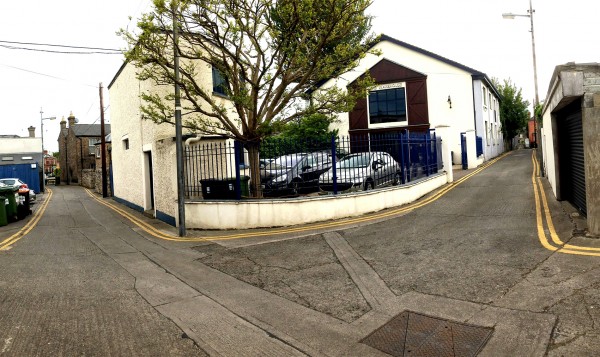
Photo by Steve Kingston.
A global search is on for relatives of Mary Flannery Woods. Better known as Molly Woods, she was a key player immediately after the Rising and into the War of Independence, a member of Cumann na mBan and confidant of Michael Collins.
Although born in Sligo, she was very much a Donnybrook woman. A laneway behind where she lived at 131 Morehampton Road has the go-ahead from Dublin City Council to be renamed in her memory.
The only problem remains the exact spelling of the Irish version of the name. It has to be right the first time, as once it is changed there’s no going back and as there have been some unfortunate incorrect Gaelic translations of street names over the years, DCC are understandably making sure that every fada is as it should be.
So who was Molly Woods and why should she have a street named after her? Born in Sligo, she was politicised at an early age, having been witness to evictions and the activities of the Land League, which her father and uncles were involved in.
She started life as a teacher, then became governess to a wealthy Irish family who moved to Malta. She moved back to Ireland to marry Andrew Woods of Donnybrook, a man she had never met but knew through the columns of The Irish Fireside Club, a nationalist movement that published essays and articles in a newspaper called The Weekly Freeman. It was love at first type and after a short period writing to each other she returned to marry him.
She started her revolutionary career protesting British Army recruitment with her husband, demonstrating in Herbert Park at rallies and drives to send Irish men to the front. She played no role in the Rising. In a statement she gave to the Bureau of Military History she said, “I heard there was going to be a rising but I had no part in it. When it started, all the people in Donnybrook were dumb-founded but I was not. I always regretted I had nothing to do with it.”
This regret led her to join Cumann na mBan in 1916 and she immediately began risking her life for the cause, helping escaped prisoners.
By now her home, St Enda’s at 131 Morehampton Road, had become a hub for the IRA and she herself got full use of it by trading guns from it, buying them from Free State soldiers and selling them on to ‘the boys’. It was also a safe house and arms dump and was open to Volunteers 24 hours a day.
It was well-known that she left both a front and back window open in case anyone needed to slip in unnoticed in the dead of night. These were used constantly and she was often unsure of who or how many would come and go over the course of a day. This led her husband to remark that she “should start giving them her own clothes”, as the best of his wardrobe had been given away as changes of outfits for IRA men on the job.
Her real work started when she began buying and renting safe houses around Dublin for Michael Collins and then running a network of them in and around Donnybrook for various IRA men. St Enda’s was still very much in use, which meant it got raided nearly every day. Molly’s quick thinking and wit prevented anything being found but before long it became too risky for anyone or anything to be kept there.
After the War of Independence she became heavily involved in the Indian-Irish Independence League and became close friends with many household names from the Indian nationalist movement.
We hope the issue of the Gaelic name can be resolved soon as she is certainly someone who deserves a permanent memorial.
By Steve Kingston



